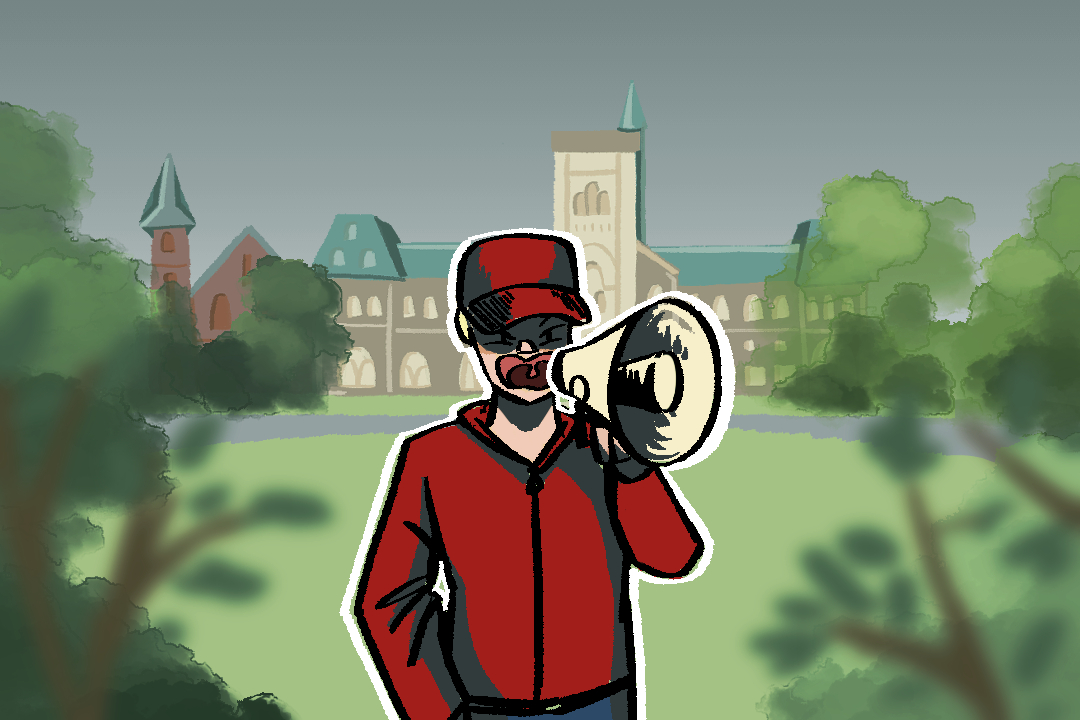Images and videos of the recent attack on the United States Capitol by pro-Donald Trump rioters have sent shockwaves across the world, prompting leaders from within the United States as well as scores of foreign dignitaries to speak out against the violence.
But to those of us looking in from the outside, we should not be content with passively viewing these events as isolated American problems. A wave of far-right nationalist political movements has been seen taking root across the globe in countries like France, Germany, and Poland.
Not even our stereotypically friendly and inclusive country has been spared from these problems; in fact, if Canadians take a closer look at some of the images from the Capitol siege, they may also find cause to reflect. That is because front and centre among the rioters were the Proud Boys, a group that was recently discovered to be involved in the riot’s planning and that — despite their excessively American garb — was actually started by a Canadian.
The group’s involvement in the incident has now sparked debate within our government whether or not to designate them as a terrorist organization, joining the likes of the Taliban, Al Qaeda, and Boko Haram. The Proud Boys would not be the first far-right extremist group to which the government has given this designation. As of 2019, the federal government has designated two far-right groups as terrorist entities: Blood & Honour and Combat 18.
With all this in mind, when Canadians look at the recent events in Washington D.C., the lesson we must take away is that the problem of far-right agitators and white supremacy does not stop at our southern border, and that it’s not a uniquely American issue. Acknowledging the existence of this problem here in Canada is just the first step. What can be done to help stem this far-right tide?
While we can certainly wait for the government to take action as it is currently considering doing, postsecondary institutions can also take responsibility in the fight against white supremacy. At U of T, we have seen advertisements on campus from white nationalist groups.
However, we must venture down this path with extreme caution to avoid attempting to solve one threat to our nation’s democracy by creating another. If universities are to navigate these issues successfully, they must carefully balance the need to combat white supremacy with the importance of ensuring the measures they take do not harm one of our fundamental freedoms: free expression.
This debate is currently heating up in the US as social media sites have begun suppressing conservative discourse they feel violates their policies against hate speech and the incitement of violence. To best achieve this equilibrium between free speech and combatting white supremacy, universities should draw upon their history as bastions of liberal activism to orient themselves correctly.
We can look back to the prototypical university movement that kicked off the student activism of the 1960s, which defined that decade and influenced a high degree of subsequent student activism whose impact is still felt on university campuses today.
This was the Free Speech Movement at the University of California at Berkeley. This example is so important to examine because, when compared to the free speech debates being held on campuses today, it clearly shows the dramatic shift that has taken place in student activism on the subject.
In the 1960s, free speech activists at Berkley protested to remove barriers to free speech and academic freedom following attempts by the university to quell rumours that the campus was welcoming to left-leaning radicals by no longer permitting students to participate in political activities on campus.
Six decades later, student activists can be found protesting against the free exchange of ideas and for the suppression of beliefs that differ from their own. Campuses across the US have protested against the arrival of speakers who do not share their opinions and values, trying to force the cancellation of the speaking event or prevent them from voicing their views. We here at U of T have first-hand experience with this phenomenon.
One must only look back to the Jordan Peterson controversy a few years ago. Peterson’s views on transgender pronouns and political correctness were faced with student efforts to silence him or, if that was not possible, to make enough noise to drown out his dissenting viewpoints. However, this ‘deplatforming’ only served to further popularize Peterson, including within far-right groups.
Going back to the role postsecondary institutions can play in the fight against far-right extremism and white supremacy, universities can and should be a part of the solution. Students should protest real hate speech and racism. School administrators should denounce this speech when it appears, and if it truly meets the school’s standards of discrimination or harassment, they should then intervene.
But if this is not done judiciously — that is, if the current mindset of ‘deplatforming’ is used in the fight against hate speech, it could silence far more valuable and legitimate opinions than hateful ones.
This is only the immediate harm; in the long term, the mostly conservative voices being silenced will feel the effects of censorship and the loss of their freedom of expression. A likely outcome could be the further radicalization of people who believe they’ve had their beliefs suppressed.
This is a grave danger; the foundation of our democracy is that we use speech to solve the problems we face collectively. If this is taken away, conflicts and disagreements may no longer be resolved verbally.
If these trends continue in the same direction, I fear that universities, once the safe haven for controversial debates and ideas, will see a dismantling and, quite possibly, a fatal weakening of our free speech and academic freedom protections — ironically, at the hands of the same lineage of student activists who fought for their implementation not too long ago.
Sheldon Stern is a third-year political science and history student at Innis College.


